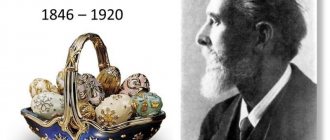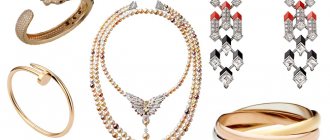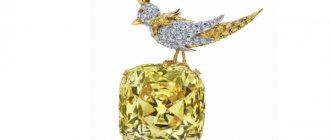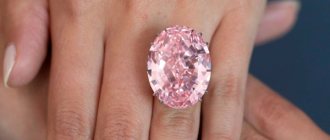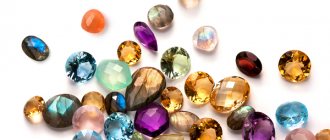The master of jewelry craft, known today, was born in 1968. He graduated from the Kazan Art School, and then created his own workshop. Within its walls, he and his colleagues made custom stained glass windows and painted fabrics. In 1992, the first workshop was opened, where Ilgiz began producing jewelry. The main direction is the revival of authentic Asian traditions.
Advertising - Continued below
But the master did not shy away from modern technologies. It was this symbiosis of techniques that allowed him to receive his first prize in 1994. Participation in the International Competition for Beginning Jewelers from Muslim Countries brought him popularity. The very next year he becomes a partner of the Moscow Armory Museum in the capital. It was this collaboration that brought European notes to the jeweler’s work.
Enamel miracles
Work in the museum left a certain imprint on the entire philosophy of jewelry production. Ilgiz became interested in enamel. The master especially liked hot enamel. Products made using this technology are appearing more and more often. In 1997, the first collection was presented in France, the basis of which was jewelry coated using the technique of “stained glass” and “solid” enamel. Such bright, shiny and ethereal products simply could not go unnoticed.
The sophisticated French public appreciated Ilgiz's products. Moreover, the master was nicknamed “the champion of enamels.” The success was reflected both in the press and in reviews of famous jewelry makers. Later there were other equally prestigious awards: “Jewelry Debut” in 2001, “Golden Constellation” in 2002, the title “Champion of Champions” in 2011.
Advertising - Continued below
Modern jeweler
Today Ilgiz Fazulzyanov can be safely called not only the jeweler of Tatarstan, but also the pride of all of Russia. Since 2012, he has been working under the Ilgiz F brand, boutiques of his jewelry are opening all over the world: Moscow, New York, Geneva, Paris. The master's collections are always limited; jewelry is not produced for the mass consumer.
Now Ilgiz lives in the capital, where he moved from Kazan several years ago in the hope of conquering new heights in his life’s work. His workshop is also located there, it is located in the very center of Moscow. The whole process is managed by his wife Dina, who is the director of the brand. Ilgiz teaches young jewelers the craft, passing on his experience and knowledge to them. The workshop is always noisy; Ilgiz has a queue of talented young people who want not only to learn the basics of jewelry craftsmanship, but also to learn from the No. 1 enameller in Russia.
On April 1, 2016, a significant event took place - the personal exhibition of Ilgiz Fazulzyanov “Jewels inspired by nature” opened in the Kremlin. The entire 4 months of the jeweler’s work were available for everyone to view. Among the outstanding exhibits of the exhibition are the “Bullfinches” pendant and the set of earrings and ring “Butterflies”, created using extraordinary cut pearls. Thanks to these works, Ilgiz Fazulzyanov won two top awards at the International Jewelery Design Excellence Award in Hong Kong in 2011 and 2013.
Ilgiz Fazulzyanov: “Faberge, for example, is far from what I do”
Ilgiz Fazulzyanov: “As such, the concept of jewelry art has been lost in our country. There’s practically no such thing abroad” Photo: Alexey Belkin
“I VIOLATE ALL JEWELERY PRODUCTION REQUIREMENTS ”
— Ilgiz, you are originally from Zelenodolsk. Tell us how your creative journey began. How did your love for art first appear and manifest itself? — I have had a love for art since childhood. It cannot manifest itself; it either exists from childhood or does not exist. But jewelry art... It all started in 1992.
-What happened then? — It was a time of creative exploration, I was designing both interiors and exteriors, making stained glass windows, batiks, and much more. Fate would have it that I was accepted into the jewelry training group. Unfortunately, this education lasted less than two months, but this topic itself fascinated me so much that just two years later, in 1994, at a festival in the capital of Pakistan, Islamabad, I took the Grand Prix as the best jeweler among Muslim states.
— Why did you decide to go into jewelry business? — This is an amazing direction where there is no limit to perfection. I have already said that I was involved in many things, and in other types of decorative, applied and fine arts there was completeness for me. There is a certain point in creativity and craftsmanship, but not in jewelry. This infinity attracts me.
—Where did you study? And why only two months? — I went to study in Tajikistan, but we didn’t undergo any training there, because we found ourselves in the very redistribution, when troops were brought in there, there was a coup. Therefore, we were more focused on getting out of there. And when I returned, everyone knew that I had gone to study to become a jeweler, and everyone started carrying chains and rings. As a result, I had to learn the basics on my own. That's how I realized it.
— But you say that already in 1994 you received the Grand Prix. It seems to me that this is too short a time to master jewelry art. — Yes, for all people, especially professionals, it is impossible to achieve such results. But it turned out that it was possible.
—Who was your teacher? An ideal? “There was no teacher in this case.” The sample was jewelry works that are in our museums and archives. I simply studied them, first tried to copy, then created my own, talked with art critics, they talked about some subtleties, but not technical ones, but why they did it this way, what the ornamentation was. Then we created a certain collection of jewelry specifically for the museums of Kazan: the Kazan National Cultural Center, the Museum of Fine Arts, etc. I created a national item, and only then began to combine the European vision with our traditions. And so everything went step by step.
— That is, you learned the technique yourself. - Yes. Now I understand (I have been in this direction for 25 years) that, both then and still today, I violate almost all the technical requirements of jewelry production. I created my own unique techniques that I use now, which have no analogues.
-Have you patented them? “I don’t see the point in patenting, because no one will steal my inner feeling, flair and skill.”
“At least 10 jobs are being done at the same time, each job gets to me about once every half hour. All products pass through my hands" Photo courtesy of Ilgiz Fazulzyanov
«MOSCOW FOR ME, LIKE KAZAN IN ITS TIME, BECAME A SMALL SPACE»
— As far as I know, you were already a famous jeweler in Kazan. Why did you leave everything and rush to Moscow? What dream was calling you? - Not a dream. First of all, it was the understanding that the space of Kazan and Tatarstan had become cramped for me, because every artist has his own space. I needed to increase this space. That's probably what I did.
— They say that Mintimer Shaimiev’s wife was a connoisseur of your art. Is it so? “I wouldn’t say that she is a connoisseur of my art.”
- Then a client? “And I wouldn’t call her a client.” We never knew each other. She probably just came across some of my work. Yes, I did some work commissioned by the presidential palace, and my workshop was located in the Kazan Kremlin. Therefore, I had to do work on government orders.
— Which of the clients of that time are still with you now? “I’m trying to keep my distance from Kazan now, but these are my personal matters.
— What were your first steps in Moscow? Where did you go? — I moved to Moscow in 2003. Then I was already independent, I had my own production. I was already known in Moscow, I had clients, two or three exhibitions were held every month. He worked both day and night. Now Moscow, like Kazan in its time, has become a small space for me. I am expanding the scope of my personal space and creativity beyond the borders of Russia; I have many trips and meetings abroad.
— I read that you are valued more in the West than in Russia. - I wouldn't say that. It's just that the overall level of perception is a little different. And, as many who have seen my work say, they have a certain magic. When I get work, then, in fact, my presence is not necessary. And it makes no difference whether I am in Russia or in the West. And, by the way, the first serious exhibition was offered to me in Russia, and not by anyone, but by the Moscow Kremlin Museum.
— I’ll ask you separately about the exhibition. But if we talk about your current period, do you communicate in Moscow, for example, with the Tatar diaspora? Are you friends with someone? — We talked for some time, there was a Tatar club. But then I stopped communicating because I didn’t see any point or results in it. Somehow it doesn’t work out for me with my fellow countrymen.
— What about your fellow jewelers? Is jewelry art alive in Russia? — I communicate abroad, I communicate with some in Russia, but these are already elderly people. As such, the concept of jewelry art has been lost in our country. There is practically no such thing abroad either, because everyone is trying to engage in mass market, that is, mass production, and not art. But we communicate with those who have a love for jewelry, even among manufacturers, and we have good relations with them.
“PEOPLE HAVE LOST CONFIDENCE IN JEWELRY”
— Each of your works is a work of art, a unique thing. Right? — Almost all of them are single.
— Since you’re talking about the mass market, why don’t you work with this segment? Have you tried it? - I tried. But, you see, by releasing such products, you lose your professionalism as an artist. I believe that what is important in creativity is constant growth and the desire to achieve something - higher and higher. But for mass production there are completely different requirements, products in a simplified version, different tasks are set. There are a lot of offers, but I’m not doing it yet.
— Are there any famous jewelry collectors in Russia? — Mostly, buyers’ collections are formed spontaneously, based on the emotional factor. I have not yet met professional jewelry collectors in Russia.
— Is this more developed in the West? - Certainly. The fact is that this culture has existed there for a long time. We lost it.
“Are you saying that she didn’t exist at all?” — Before the revolution, of course, it was, but then it wasn’t. Moreover, at a certain period of time, people bought jewelry in a store, and then it turned out that the products were half the price. Therefore, people have lost confidence in jewelry. When you see that in stores today they write about 70 or 50 percent discounts, this cannot be. There can be no discounts on jewelry, because gold does not become stale, does not dry out, or mold. So are the stones. Therefore, when they write like that, people immediately lose confidence. As a result, jewelry is not a product that people could trust and invest their finances in.
— By the way, is it worth investing in gold as an investment, especially during a crisis? — To save your own finances, this is the simplest and most common investment. The main thing is to understand at what price you are buying it and where you will sell it later. If you sell all this through a pawnshop, then, of course, you won’t get that kind of money. Unfortunately, our legislation is slightly not in favor of the consumer. This is due to the fact that a person, when buying ordinary gold from a bank, pays VAT, and he already loses that money if he returns this gold to the bank. As a result, a person earns practically nothing.
— Are your jewelry, your works a means of investment? — I tell you with 100 percent confidence that this is an investment product.
«THE BULGARIAN TATARS MAINLY DID EVERYTHING WITH FILIGREE WORK»
“I read about how the ring is made and watched a video, but it’s still a mysterious process for me. Please tell us how your creative process is organized from idea to final implementation. Where do you look for ideas? What inspires you? — It would take a long time to describe all this; these are very subtle moments. In any case, the most difficult thing is the idea. When it appears, all other materials are selected for it, what it will be made from, what metal, what stones. And then comes the process itself. Since I have a certain number of assistants, the product is broken down into its component elements, and each person begins to make it under my control, and in the end it is all assembled under my control into a single whole.
— So you don’t make products yourself now, inside and out? - I’m doing something. At least 10 jobs are done at the same time, each job gets to me about once every half hour. I definitely do something: either I control it, or I make adjustments, or I do something myself. All work passes through my hands, I fill them with my energy. Therefore, the works that you will see at the exhibition are filled with one energy, and not ten.
—Where do you get ideas? - It's impossible to say. Because if you understand where ideas come from, then you will no longer be able to create. It's better not to figure it out, to be honest. It appears and that's it.
— You mentioned in an interview that you began to mix our traditions with European ones. — Today I know almost all techniques: Russian, European, and Asian, including the traditions of jewelers from the times of the Bulgarian Tatars. All these techniques that I know and use in my work.
— How does the Tatar style differ from Russian and European? — Firstly, design, drawing. Then by its utility, that is, use. And the third - with techniques. For example, among us, among the Bulgarian Tatars, basically everything was done with filigree work - thin filigree that was wound. In Russian traditions there was more extensive: filigree, but it was thicker, there were enamel works, embossing was used. European ones were more refined in drawing, design, and enamels were used in a completely different way. There were a huge number of them. There are even Russian, French, English, and Swiss enamels, there are Japanese enamels, Chinese enamels, in India they do enamels, but there is a completely different school there. Schools are different everywhere.
— Do you mix all this in your works? It turns out to be a kind of eclecticism. - Certainly. This is the job of an artist: to collect those techniques and use them so that the final product reflects the entire idea that you originally conceived. What is the weakness of many jewelers and artists? They have a certain direction, one style, one technique and try to use it in all works. Yes, this is a kind of face of an artist, but at the same time he limits himself in his capabilities, he cannot do everything.
— What materials do you like to work with? — My favorite material is enamel, of course. This is a material that is used in every one of my works, even a small piece will still be used.
—Where do you get materials? — Do you want to know some secrets? But, fortunately for me, this is not the 60s and 70s, now the world is so open, and in Russia all this can be purchased. There are jewelry exhibitions, there are already suppliers, you can already buy gold at the bank.
— Do you trust your suppliers? - Of course, I already have many years of experience.
Ilgiz Fazulzyanov made dials for the limited men's watch collection Amadeo Fleurier 43 Rider of the Apocalypse Photo courtesy of Ilgiz Fazulzyanov
— Do you admire any of the contemporary jeweler-artists? Do you take them as an example? - No. I never engage in idolatry in anything at all. Neither athletes nor artists. There are talented designers and jewelers, but there really aren’t that many of them. Today it is designer JAR and jewelry designer Wallace Chan. These are people who do and create what I like.
— It is believed that the jewelry business is an extremely closed and small “get-together.” Are those who say this right? - This is true. This business is very closed. People are rarely allowed in there. And if someone randomly enters, they cannot stay there for long. There are certain conditions. This business cannot be massive, it is narrow. The fact is that there is a separate diamond business, a business of expensive stones of the first group, there is a gem business, and there is a gold business. And the jeweler is the unifying link. Not everyone succeeds in combining all these four areas of business into one. Firstly, you need to earn authority over time, there must be a very trusting relationship. If at some stage a person has put a black mark on himself, then he can be immediately eliminated from this business. For example, someone wasn’t paid or something else. It's not always the same.
“A WOMAN NEEDS TO BE IN THE MOOD, BUT PHILOSOPHY IS IMPORTANT FOR A MAN ”
— Why in general, in your opinion, do people decorate themselves? Why did they start doing this? - What is decoration? This is individuality and, probably, also social status. Now, unfortunately, this status has been lost, because even a janitor can wear a gold chain. And before, gold was for a certain upper caste of society, the rest wore mostly silver. Nowadays everyone wears gold. Jewelry that belongs to the class of art is already a collector's item. Therefore, perhaps, jewelry is primarily emotions. When a person purchases a product, he receives more emotion. Today, jewelry is one of the items that can be passed on by inheritance.
— Do you put any idea into your jewelry? Consumer, your client will have to figure out what you wanted to say? - Necessarily. Each work is a reflection on a certain period of my life. If someone writes down in their diary every day what happened to them, then my jewelry is something that I encountered at a certain point in my life, maybe I saw something, maybe I met someone, maybe that - suffered - joy or disappointment - all this is in my products. Each work represents a certain period of my life. It arrives a little late, but that’s how it is, because jewelry is not made in one or two days, it’s a whole process. One product matures for at least six months.
On March 31, the exhibition “Jewels inspired by nature” opened in the Assumption Belfry of the Moscow Kremlin. Ilgiz F.”, where both new and some of the first works of the master are presented. Photo courtesy of Ilgiz Fazulzyanov
“It’s still hard for me to imagine.” “It’s hard for everyone to imagine, even people from the jewelry business, because mass production is completely different. So it's difficult to understand.
— Do you do anything to order? — Basically, we make something to order that is related to a person’s image. I would not say that this is art, these are a kind of sketches on which their technologies are developed. You know, there is a haute couture dress, and there is prêt-à-porter. It's the same here.
— Can you give an example when you made something to order and what characteristics of a person were taken into account? — And we take everything into account: character, external data, dress, even what event a person is going to. In any case, we discuss this whole matter.
— Mostly women wear jewelry. Do you offer men anything? — Of course, but these are mostly household items or some kind of religious items.
— Who is more difficult to work with: men or women? - Of course, with men. It’s easier with women, because everything is built on their emotions. She already has a certain condition. For example, a woman comes and looks at five products, today she likes one, but tomorrow she may like something completely different, because her mood has changed.
- So it turns out that it’s more difficult with women? - No, you just need to get into her mood exactly and show exactly the product that suits her mood. And philosophy is important to a man. He will not just take some product where some pebble will shine, this is not so important to him, he wants to know why it is this way and not another. And for women it is more important that it is beautiful, impressive, bright. You just need to feel the woman from the first visit and offer what she needs.
“Then you must also be a good psychologist.” - Where to go?
“Today I know almost all techniques: Russian, European, and Asian, including the traditions of jewelers from the times of the Bulgarian Tatars” Photo courtesy of Ilgiz Fazulzyanov
“WHEN CUSTOM PRODUCTS ARE MADE, IT IS POSSIBLE TO DETERMINE WHICH ENERGY A PERSON IS NEGATIVE OR POSITIVE”
— It is believed that stones store human energy. Do you believe in the magic of stones?
— A person fills any stone with his energy. But the stone and the jewelry themselves are already filled with energy. Everything I do is filled with my energy, and the person already complements it. It can not be any other way.
- But many people believe that stones can also retain negative energy...
- Of course they can. There are people who buy antique jewelry. I believe that everyone takes a risk when buying an antique item or stone, because they do not know what kind of energy is carried in this stone.
— Do you have any signs or superstitions in your work?
- There are no such superstitions. But I know that when products are made to order, you can determine what kind of energy a person has - negative or positive. If a simple product is very difficult to make, then we know that the person will definitely be capricious or will not pay, or something else, that is, there will be some negative stories 100 percent. This is what happens.
— And there are a lot of picky clients? - Of course, they happen. But I am self-sufficient, I don’t hold on to every client. If I feel that a person is very difficult, then I try not to work with him anymore. I do one job and that’s it.
—Are there any people or stars among your clients who are famous abroad and in Russia? “I don’t talk about this to anyone at all and don’t name names.”
“The most difficult thing is the idea. When it appears, all other materials are selected for it, what it will be made from, what metal, what stones.” Photo courtesy of Ilgiz Fazulzyanov
“I HAVE NO COMPETITORS IN EUROPE AND NO COMPETITORS IN THE WORLD”
— Maybe you dream of becoming the second Faberge? — I don’t really like being compared to Faberge or anyone else at all. Carl Faberge was not a jeweler at all. He was a good manager who united a huge number of craftsmen and managed them professionally. His merit lies not in the fact that he manufactured the products, but in the fact that he united them. And then times are different now. Everything I do, Faberge, for example, is far from this.
— Do you see your competitors in Russia? - Unfortunately no. And why in Russia? I have no competitors in Europe, and there are no competitors in the world.
- Are you sure about that? “I’m not only confident, I’ve traveled to all the continents of the world. Unfortunately or fortunately, I was probably a little ahead of my time. In 50 years or maybe earlier, these products will cost completely different money; they will personify the jewelry art of this time. Today, such products practically do not exist.
— So you are a living classic? - You can say so, if not to be modest.
— How is your business model built? I know that you have a brand Ilgiz F. - I am still a private entrepreneur and the owner of a trademark, which has been registered since 1996. She is known almost all over the world.
“CANVAS – RAG AND PAINT – THIS IS NOT AN INVESTMENT PRODUCT”
— It seems to me that little is written about you in Russia. — You see, in Russia they write little in general, especially about jewelry, because for many publishing houses and the media this is not a format. Even when we ask for help, it is easier for a financier to help an artist who will paint a picture. And as soon as you say that you are a jeweler, that’s it, the topic is closed.
- Why does such a wall appear? “It’s in the brains of our people.” They believe that jewelry making is not an art, but a business. Since there is gold and diamonds, there should be a profit. But jewelry art is of a completely different nature: these are the same paintings, only the material is different, not canvas and oil paints, but gold. I’m offended that artists’ paintings cost 600 thousand euros. I say: you know, for 600 thousand euros, what kind of jewelry can you make, with what stones? Only this picture will burn, and nothing will remain, but gold and precious stones are the property of nature itself, this is an investment product. But there are no investment products in paintings: canvas, rags and paints are not an investment product.
- What about the Mona Lisa? - This is history, these are different things. We are now talking about contemporary art. We were at the auction house, so 600 thousand euros is not yet the most expensive painting. Why is that? Art dealers are not focused on promoting jewelry art only for the reason that there are no jewelers, there are few of them. There are more artists: if one doesn’t work, then the second one can be taken and promoted. An artist can paint a picture in two or three days, or a week, but a piece of jewelry takes years to make. At the same time, if you go to a museum, you can see in each painting who the artist is, but this is not the case with jewelry. A piece of jewelry is the personification of the people of a given period, it is a person, a property. Because jewelry collects all the discoveries, all the technologies that existed for a certain period of time. This includes metallurgy, physics, chemistry, mathematics, architecture, and design - everything that exists in humanity is combined in jewelry art. Even laser machines are now used in jewelry.
“For a museum to want to make an exhibition of someone living today is the first time. It’s simply impossible to get into the Kremlin.” Photo courtesy of Ilgiz Fazulzyanov
“THE CLASS OF PEOPLE HAS APPEARED WHO REFUSES MASS MARKET, EVEN FROM CARTIER ”
- You said that you were 50 years ahead of your time... - Maybe more, maybe less.
- So what will happen in these 20, 30 or 50 years? Do you think that something will change in people's minds? - It’s already changing. Firstly, a layer of people has already appeared that refuses mass-market products, even from companies such as Cartier, Van Cliff, Bulgari. Many people already want to become a person, an individual again. In the post-war period, the entire world business was structured so that everyone was the same with more or less equal opportunities. Nowadays people strive to be individual. It actually makes me very happy, even in clothes. Even if a person dyes his hair, it’s not because he’s a hippie, but because he wants to stand out. And when a person grows up, becomes an adult, he will try to acquire some thing, a dress, a piece of jewelry that is completely individual, which is only for him, which will characterize his personality. People are moving towards this. And then, the very concept of art is being lost due to the fact that modern technologies are used, some computerization in production - this practically knocks out people who work with their hands. Jewelry art is only manual labor.
— Would you need a 3D printer? - He will never do what I do. Some have already tried: “Yes, we will do it!” But nothing good came of it. It's like haute couture and prêt-à-porter. There are only a few people left in haute couture. We communicate with them, they say that it is unrealistic to find people, especially a young girl, who will sit and embroider with beads by hand. Today's generation changes their phone every six months, but earlier a person bought a phone and would carry it for years. The younger generation is wired for transience. To become a good craftsman, even not a first-class one, he must sit at a workbench for 5 years. The young man cannot stand this. Now, for example, it is unfashionable to sit in one place, now it is fashionable to change jobs.
- Is this good for you? “It’s good for recognition, but for understanding what awaits us next and how to pass on our skills, of course, this doesn’t make me happy.”
— By the way, are you already passing on your skills? You said that you have assistants. “I can only convey to them the skill of a jeweler, but I cannot convey the soul of an artist and a certain flair.
— Aren’t you afraid that they will steal your ideas, methods, techniques? — The fact is that each of my techniques is my soul, energy. The people who worked with me, whom I taught, are leaving. I control everyone and understand what they are doing. For now I am sure that they will not create anything. They try, but it’s not the same, the craft is not of very high quality.
- In that case, are you a monopolist? - Yes maybe.
— You talked about the spirit of the times. The current fleeting time will give birth to jewelers and artists like you. — Jewellers, I think, hardly, because it is very hard work. Artists - yes, just artists.
“Then jewelry art has no future, since there are no such people.” “The thing is, I’m probably one of those people who will add works of high art to the amount of jewelry in the world.” They still exist, for example, old works by the same Cartier. Let's take 10 thousand pieces of jewelry, which are a work of art. I am simply replenishing this amount. Before this, there were also failures in jewelry, there were no names. There were names, but those who made some kind of fashion, but they did not fall into the category of art. And here I am replenishing it. It’s difficult for me to say what will happen next. In each period, some star shoots out in some area.
“I am probably one of those people who will add to the number of jewelry in the world with works of high art” Photo: Alexey Belkin
“IT WOULD BE WONDERFUL TO FINISH AN EXHIBITION CAREER AT METROPOLITAN”
— Automobile concerns bring their best models to world auto shows, artists exhibit at exhibitions, but is there something similar in the jewelry business? Do you take part in these exhibitions? “This doesn’t exist in the jewelry business.” For the mass market this is a lot, but for art there is practically none, for art only a museum. There is also the so-called class of luxury collectors. There is also the Paris Art Biennale, which has a section on jewelry art. It's quite difficult to get there. There is another exhibition in Maastricht, there is a waiting list of up to 30 years.
- 30 years? And you say that there is no one who makes works of art. — There’s not only contemporary art, there’s more antiques. Among his contemporaries, for example, Wallace Chan is exhibited.
— Let's talk about the Moscow Kremlin. Still, this is an iconic place... - Yes, this is an iconic place. After this exhibition, many doors opened for us, especially in Europe. Many publications write a lot about me, for example The New York Times or the Financial Times. I was written about in all Vogue magazines from Japan to America. We began to notice that almost every day one article was published abroad.
— Can we say that after the recent exhibition in the Kremlin, some new stage began in your creative career? - Definitely. This is a stage of a completely different understanding of one’s creativity and a new stage of understanding how to further develop, because there are a huge number of proposals. Now you need to choose the right one from them, so as not to peddle. Therefore, it is necessary to correctly determine the next steps; it is now important not to stoop below the museum. It's hard to go up, but it's very easy to go down. Then there will be no turning back.
— How did you get to the Kremlin? - This was the decision of the Kremlin Museum itself, Mrs. Gagarina ( Elena Gagarina - General Director of the Moscow Kremlin Museum-Reserve, eldest daughter of the first cosmonaut of the planet Yuri Gagarin - editor's note ). — present my works at the Armory Chamber. This is not even my personal exhibition, this is a museum exhibition. This museum represents the artist’s work—that’s where all the value lies. If you call it a personal exhibition, the value is already reduced. There are certain subtleties.
— Do the Kremlin often exhibit works by contemporaries or only already recognized works of art? “They exhibit recognized art, mostly from the 20th and earlier centuries. Today, I may not be the only one, but I am one of the first after Faberge to fully exhibit at the Armory. There were exhibitions in the 90s, but they were insignificant and were sponsored, etc. But for a museum to want to hold an exhibition of someone living today, this is the first time. It is simply impossible to get into the Kremlin.
- But you succeeded. “Yes, I guess you just need to send the right desire up.”
— Have you ever had similar exhibitions in museums abroad? — We are currently negotiating with the Louvre and the Victoria and Albert Museum in London. And our ultimate goal is the Metropolitan Museum of Art (The Metropolitan Museum of Art in New York, USA - one of the largest and fourth most visited art museum in the world - editor's note ). This is a star that is still out of reach.
— So your dream for today is the Metropolitan? — Yes, it would be wonderful to finish my exhibition career at the Metropolitan. During life, of course, this is unlikely to succeed, but let’s hope for it. America is a completely different country, and there are completely different relationships in everything. The general director of the Metropolitan himself decides whether to hold an exhibition or not.
— Have you already had any contacts with them? — We have contact, people from there have already come to the exhibition and will come again. Getting into other museums - in Washington, Boston - is not a problem, but we must achieve a certain rating of all museums in order to get into the Metropolitan.
— Since we’re talking about the USA, does it have its own jewelry school? “Everything that exists in the USA is a mixture of all kinds. America is made up of business and promotion professionals for any brand. America is a factory of business stars. They know how to do it. They don’t have a school as such, everything is borrowed from somewhere. You see, it’s like for a singer - the Metropolitan Opera, for the film industry - Hollywood, etc.
— What is the secret of your success? — The secret is actually very simple - it’s a dream and a desire. And don't give up yet.
